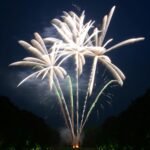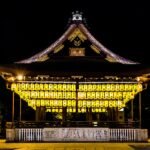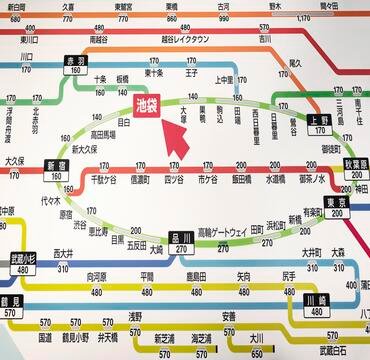Celebrating Japan: Festivals and Events Through the Seasons [日本を祝う:季節ごとの祭りとイベント]
Introduction
- Overview of Japanese Festivals:
- Japan’s festivals, or “matsuri,” are deeply rooted in its history, culture, and traditions.
- They offer a unique window into the country’s spiritual practices, seasonal celebrations, and communal spirit.
- Festivals in Japan often feature vibrant decorations, music, dance, and traditional food.
- Why Festivals Are a Must for Travelers:
- Experience authentic Japanese culture.
- Discover regional traditions and cuisines.
- Participate in age-old rituals that celebrate the harmony between people and nature.
Japan`s Festivals and Events
Japanese seasonal festivals explained and their history
Top 10 Japan Festivals
◆ Basic Information About Japan’s Festivals and Events:
- Cultural Significance: Japan’s festivals, or “matsuri,” showcase the nation’s traditions, spirituality, and seasonal beauty.
- Seasonal Themes: Events are often tied to nature, such as cherry blossoms in spring or autumn leaves.
- Unique Experiences: Each festival features traditional dances, music, food, and elaborate decorations.
- Popular Festivals: Gion Matsuri (Kyoto), Sapporo Snow Festival (Hokkaido), and Hanabi Taikai (fireworks festivals).
- Tourist Tips:
- Check festival dates as they vary annually.
- Book accommodations early during major events.
- Respect local customs and participate in rituals.
Japan’s festivals provide a vibrant, immersive experience for travelers to enjoy the country’s cultural essence.
Japanese Festivals and Events Image Gallery
Spring Festivals: A Celebration of Renewal and Nature
1. Cherry Blossom Festivals (Hanami)
- Timeframe: Late March to early April.
- Locations:
- Ueno Park, Tokyo.
- Maruyama Park, Kyoto.
- Hirosaki Castle, Aomori.
- Cultural Significance:
- Symbolizes the transient nature of life.
- Rooted in ancient poetry and art.
- Activities:
- Picnics under blooming sakura trees.
- Nighttime illuminations (yozakura).
- Regional delicacies like sakura mochi.
2. Takayama Spring Festival
- Timeframe: April 14–15.
- Location: Takayama, Gifu Prefecture.
- History: Dates back to the 17th century to honor the local deity of Hie Shrine.
- Highlights:
- Ornate yatai (floats) parades.
- Traditional karakuri puppet performances.
Summer Festivals: Energy and Vibrance
3. Gion Matsuri
- Timeframe: Entire month of July.
- Location: Kyoto.
- Cultural Importance:
- Over 1,000 years old, it was initially a purification ritual to ward off plagues.
- Features:
- Majestic yamaboko floats with intricate designs.
- Evening processions called “yoiyama.”
- Lively atmosphere with street food stalls.
4. Awa Odori
- Timeframe: August 12–15.
- Location: Tokushima, Shikoku Island.
- History: Began during the 16th century to celebrate Obon.
- Main Attractions:
- Traditional Awa Odori dance with synchronized movements.
- Vibrant costumes and rhythmic music.
5. Fireworks Festivals (Hanabi Taikai)
- Popular Locations:
- Sumida River Fireworks, Tokyo.
- Nagaoka Fireworks, Niigata.
- Cultural Essence:
- Symbolizes gratitude to ancestors.
- Features thousands of colorful fireworks displays over rivers or bays.
Autumn Festivals: Gratitude and Harvest
6. Autumn Leaves Viewing (Momijigari)
- Timeframe: October to November.
- Locations:
- Nikko, Tochigi Prefecture.
- Arashiyama, Kyoto.
- Mount Takao, Tokyo.
- Cultural Meaning:
- A celebration of the vibrant colors of autumn leaves, symbolizing change and beauty.
- Tourist Activities:
- Scenic walks in temples and parks.
- Seasonal delicacies like roasted chestnuts and sweet potatoes.
7. Kishiwada Danjiri Matsuri
- Timeframe: Mid-September.
- Location: Kishiwada, Osaka Prefecture.
- Significance: Celebrates a successful harvest.
- Event Highlights:
- Massive danjiri (wooden floats) raced through the streets.
- Energetic performances by local teams.
Winter Festivals: Warmth Amidst the Cold
8. Sapporo Snow Festival (Yuki Matsuri)
- Timeframe: Early February.
- Location: Sapporo, Hokkaido.
- History: Began in 1950 with local students creating snow sculptures.
- Highlights:
- Intricate snow and ice sculptures.
- Winter activities like snow slides and skating.
- Regional food stalls offering hot miso ramen and crab dishes.
9. Omisoka (New Year’s Eve)
- Timeframe: December 31.
- Locations: Nationwide.
- Traditions:
- Bell ringing at temples (Joya no Kane) 108 times to cleanse impurities.
- Eating Toshikoshi Soba to symbolize longevity.
10. Nabana no Sato Winter Illumination
- Timeframe: October to May.
- Location: Kuwana, Mie Prefecture.
- Features:
- Spectacular LED light displays in gardens.
- Romantic atmosphere perfect for couples and families.
Cultural and Historical Context of Japanese Festivals
- Shinto and Buddhism Influence:
- Many festivals are tied to Shinto rituals, honoring kami (deities) or marking seasonal changes.
- Others, like Obon, reflect Buddhist practices of honoring ancestors.
- Community Bonding:
- Festivals serve as an occasion for locals to come together, showcasing regional pride and customs.
- Aesthetic Elements:
- Use of traditional attire like yukata.
- Beautifully crafted floats, lanterns, and decorations.
Planning Your Visit: Practical Tips
- Seasonal Timing:
- Plan your trip around the festival calendar to experience Japan’s seasonal diversity.
- Transportation:
- Book trains and accommodations in advance during peak festival seasons.
- Etiquette:
- Follow local customs, such as bowing and respecting quiet zones.
- Keep the environment clean by using designated trash bins.
Conclusion
- Japanese festivals and events are a reflection of the country’s vibrant culture and deep-rooted traditions.
- Each season offers unique opportunities to experience the harmony of nature, art, and spirituality.
- Travelers can not only enjoy the festivities but also gain a deeper understanding of Japan’s cultural richness and regional diversity.












